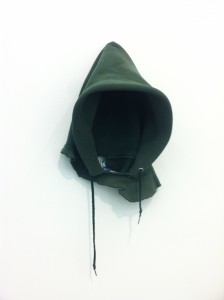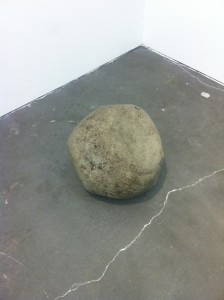In the hood
I first saw a reproduction of In the hood by David Hammons in the late 1990s, in a Phaidon publication called The art book. Still at school, my experience of art was limited to a love of Brett Whiteley, Jean-Michel Basquiat (as memorialised by Jeffrey Wright in Julian Schnabel’s then-recent film) and perhaps a few other things I can’t readily recall. In hindsight, The art book was an editorial undertaking doomed to be a selective failure: a full-page reproduction of Hammons’s work was bound together with alphabetically arranged examples from the entire history of Western art as if sense could be made from a random throw of the dice. But this contrast meant In the hood stood out simply because it echoed well beyond the canonised art history the editors had largely chosen to surround it. Its ideas arrive in sharp focus yet as a ‘work’ it is barely there. Perhaps because of this combination of difference and pitch-perfect clarity, when leafing through the book choosing ‘favourites’, In the hood would invariably fall into my late-adolescent top five.
Now in a private collection, In the hood was recently installed at the New Museum in Experimental jet set, trash and no star, an exhibition that attempts to historicize the year 1993 in New York City. In a nice, if obvious, example of the art of curating, In the hood was presented alongside Gabriel Orozco’s Yielding stone, a work of similar material restraint and clarity (and another ‘favourite’ of sorts). Both works display that good ideas can be carried by the slightest of means. Like the exhibition itself, this pairing was at once deeply meaningful and frustratingly oblique.
NYC 1993: experimental jet set, trash and no star, the New Museum, New York, 13 February – 26 May 2013.

